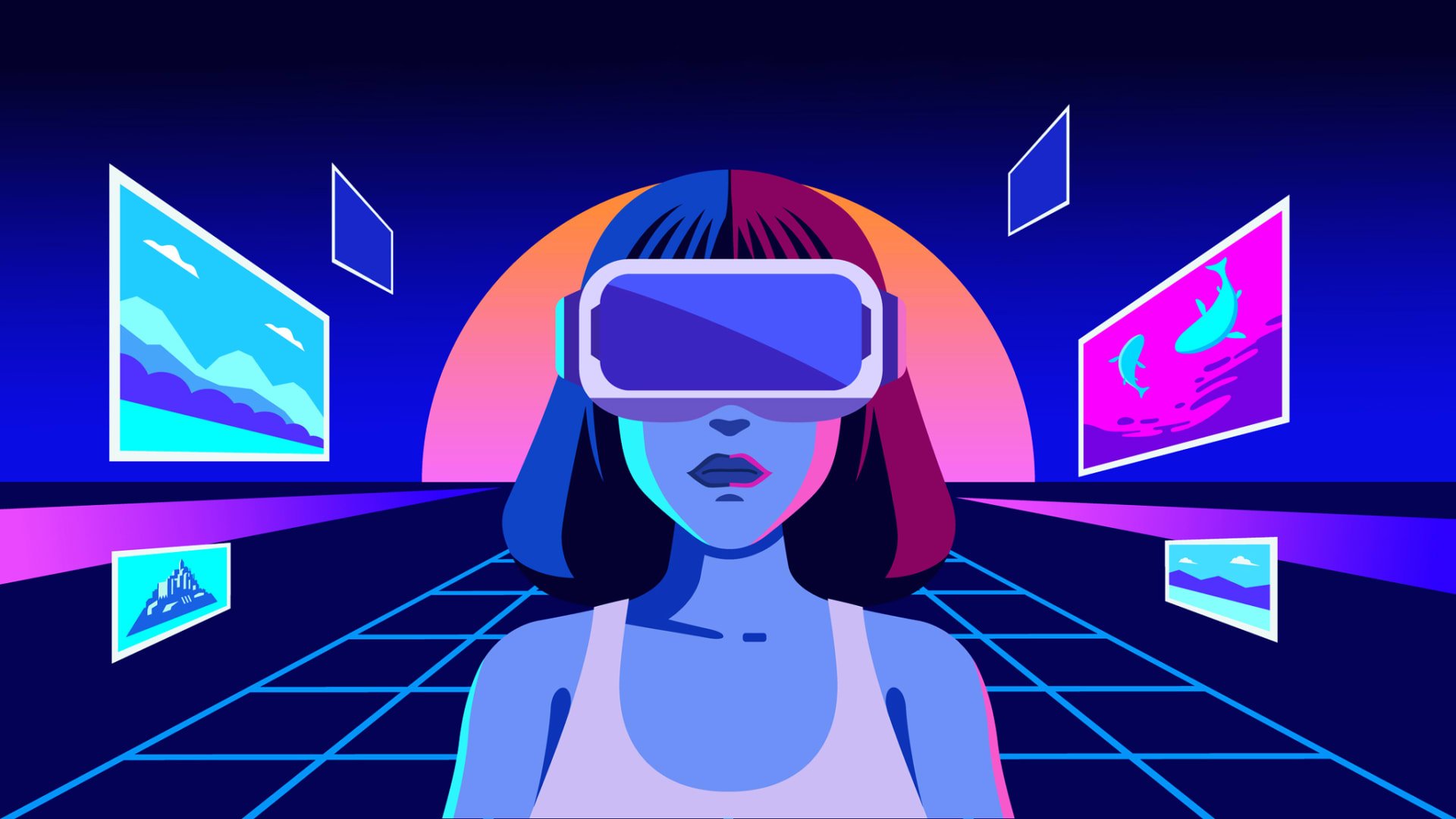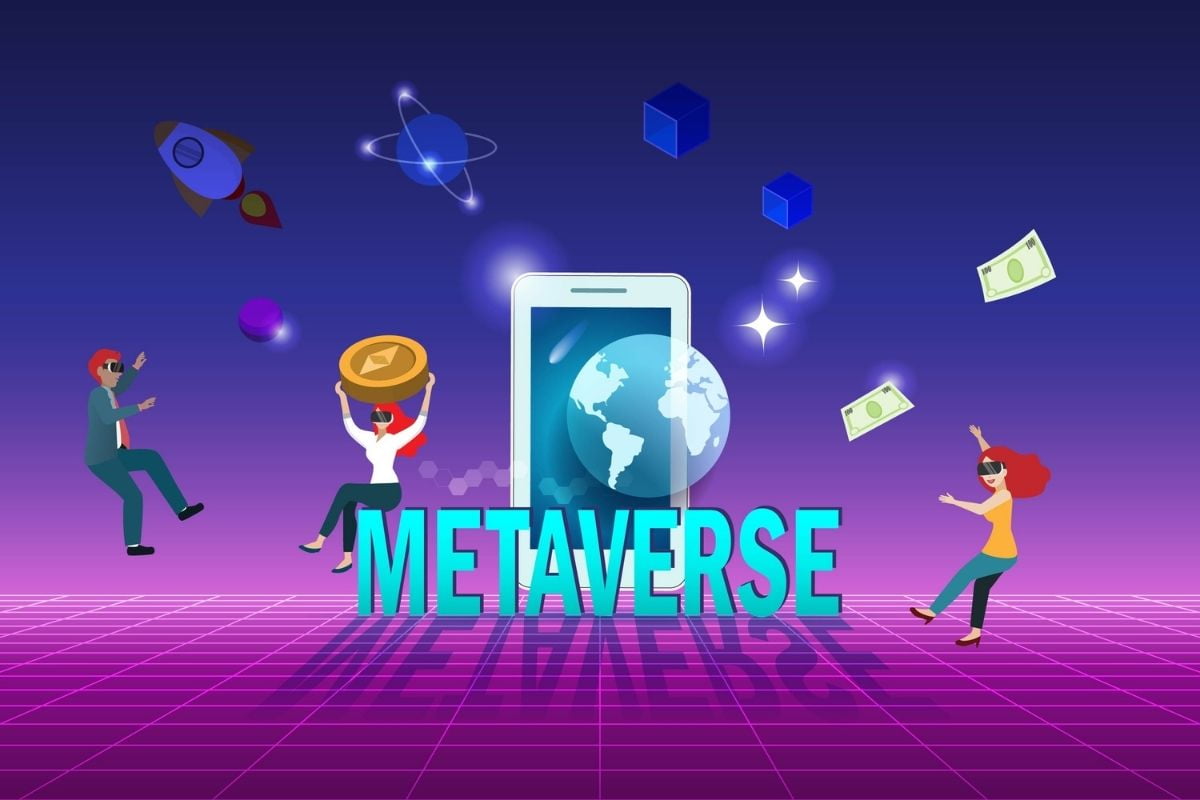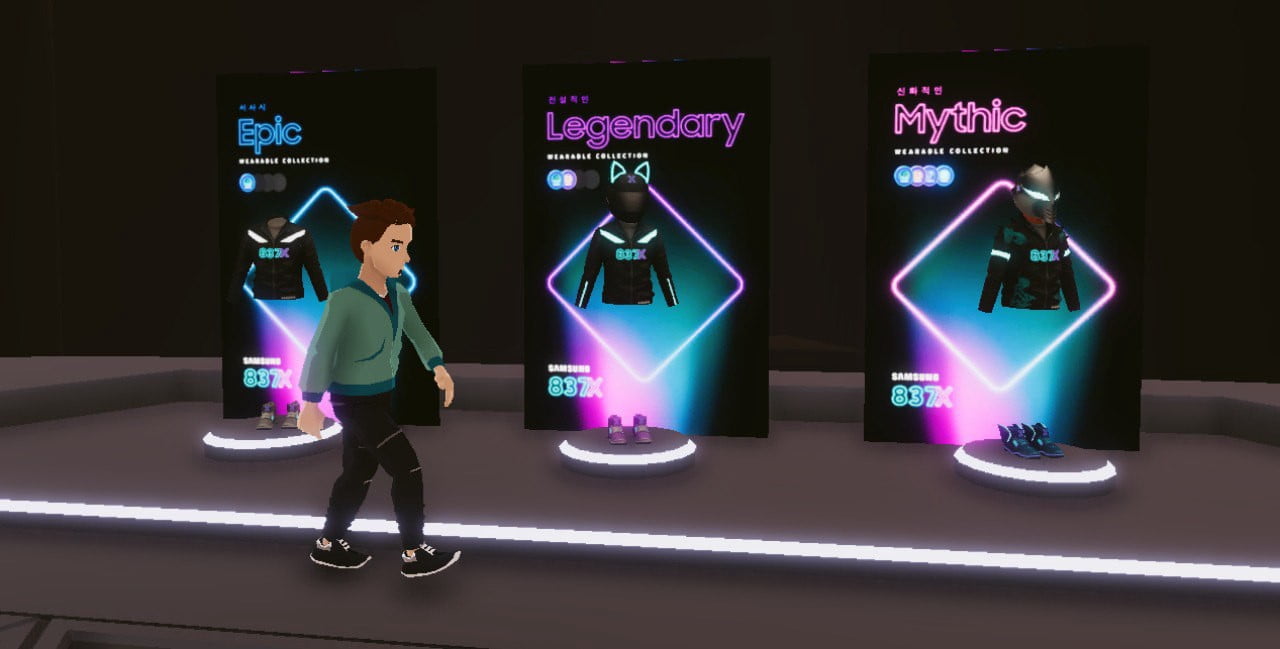Amazon brings Metaverse to the e-commerce segment with augmented rooms

Amazon brings Metaverse to the e-commerce segment with augmented rooms
Amazon View, an augmented virtual room using metaverse that shows the basic architecture of your property in 3D, is set to alter your online shopping experience. With this new function, you can now accurately swipe the things in the virtual room.
It will assist customers who require a rapid interior design assessment and review of the room’s aesthetics and atmosphere. Users can even virtually decorate rooms before purchasing things. Furthermore, it functions as an extension of the Metaverse.

More about Amazon View
You can see things in your house before buying them with Amazon View. The chair, for example, is the appropriate size, and the coffee table will complement this side of the kitchen or room. Simply take out your phone, point the camera at the frame you wish to examine, and see the AR simulation unfold in real-time.
The view in your room function is only available on iPhone 6S and later models running iOS 11.0 or later. The AR Core app for Android should be installed on the phone or tablet. Only Android 7.0 and newer are compatible with AR core.
Simply launch the Amazon app to have access to Amazon View. Then, hit the camera symbol in the search box, scroll to “View in Your Room,” and choose a product. This tool allows you to personalise and decorate your home from thousands of options.
This feature is currently not available for Indian users, but we will likely get access to the feature in the near future.

What is Metaverse?
A metaverse is a collection of three-dimensional virtual worlds created to encourage social interaction. In futurism and science fiction, it is frequently defined as a hypothetical iteration of the Internet as a single, universal virtual world that is aided by the use of virtual and augmented reality headsets.
In the 1992 science fiction novel Snow Crash, the term “metaverse” was developed as a mix of “meta” and “universe.” Various metaverses have been built for public use, like virtual world platforms like Second Life. Integration of virtual and physical locations and virtual economies is a feature of some metaverse iterations. Because of the demand for greater immersion, metaverse growth is frequently related to the advancement of virtual reality technologies.
For public relations objectives, the term has been exploited as a buzzword to exaggerate the development progress of numerous linked technologies and projects. Information privacy, user addiction, and user safety are all concerns in metaverses, and they arise from issues that plague the social media and video game industries in general.
Implementations
Video games
Metaverse technology components have previously been developed for use in online video games. Second Life, a virtual world platform that launched in 2003 and merged many social networking components into a persistent three-dimensional world with the user represented as an avatar, is generally referred to as the first metaverse.
Social interaction and 3D virtual worlds are common features in many massively multiplayer online games. Roblox, a multiplayer game development platform, has been referred to as a metaverse, and the word has since been used extensively in marketing. The games Active Worlds, The Palace, and Fortnite have all claimed to be establishing a metaverse.
Virtual reality
Facebook Horizon, a social VR realm, was introduced in 2019 by the social media firm Facebook. In 2021, Facebook was rebranded “Meta Platforms,” and Mark Zuckerberg, the company’s chairman, expressed a dedication to developing a metaverse.
Many of the virtual reality technologies promoted by Meta Platforms are still in the early stages of development. Frances Haugen, a Facebook whistleblower, slammed the move, saying that Meta Platforms’ continuous focus on growth-oriented projects is mainly done at the expense of guaranteeing platform safety. Due to the incidence of sexual harassment on the network, Meta Platforms has received user safety criticism over Horizon Worlds.
Microsoft bought the virtual reality business AltspaceVR in 2017 and has since integrated metaverse elements like virtual avatars and virtual reality meetings into Microsoft Teams.
HTC announced the launch of VIVERSE, a cross-platform metaverse ecosystem, in 2022 that would allow links across virtual worlds accessible by both VR and non-VR devices while also allowing parental controls for minors.
Workplace productivity, interactive learning environments, e-commerce, real estate, and fashion are among the proposed applications for metaverse technology.
Other smaller firms, such as the video game VRChat, have previously attempted to create the metaverse through virtual environments.
Technology
Hardware
A range of devices, including general-purpose PCs and cellphones, along with augmented reality, mixed reality, virtual reality, and virtual world technologies can access metaverses.
The metaverse’s development and adoption have been impeded by its reliance on virtual reality technology. Because of the constraints of portable hardware and the need to balance cost and design, high-quality graphics and mobility are not available. Higher-performance devices are often bulky and linked, but lightweight wireless headsets have struggled to achieve the retina display pixel density required for visual immersion. Another impediment to widespread adoption is the cost of consumer VR headsets, which are expected to range from $300 to $3500 by 2022.
To boost immersion, current hardware development is focused on overcoming the limitations of VR headsets, sensors, and haptic technology.
To boost immersion, current hardware development is focused on overcoming the limitations of VR headsets, sensors, and haptic technology.
Software
Extant implementations primarily rely on private technology because there hasn’t been widespread adoption of a single technical definition for metaverse implementations. Interoperability has been a major difficulty in metaverse development due to concerns about transparency and privacy. There have been various initiatives to standardise virtual environments.
In a January 2022 interview with Wired, Second Life developer Philip Rosedale described metaverses as a three-dimensional Internet populated with real people.
Blender, Apple’s Scenekit, and Autodesk 3ds Max all support Pixar’s Universal Scene Description standard for 3D computer graphics communication. NVIDIA, a tech company, said in 2021 that their metaverse development tools would use USD as the currency.
OpenXR is a free and open standard for virtual reality. It is a free and open standard that allows users to access virtual and augmented reality devices and experiences. Microsoft used it for HoloLens 2, Meta Platforms used it for the Oculus Quest, and Valve used it for SteamVR.

How The Metaverse Will Reshape E-Commerce Forever
Since the technology to purchase products via the internet was first introduced, there has been a divide between the actual and digital worlds.
Customers may touch and try on items before making a tangible purchase when shopping in traditional brick-and-mortar establishments. E-commerce shopping removes the physical aspect of traditional brick-and-mortar shopping while giving unmatched convenience, speed, and accessibility.
The Metaverse is where these two previously separate worlds of commerce combine to create an experience that will forever alter the face of e-commerce.
It’s Already Started
In the metaverse, the very early stages of e-commerce are already here.
Amazon, the world’s largest e-commerce company, has integrated early metaverse technologies into their marketplace. Room Decorator, the company’s newest augmented reality shopping product, lets you visualise what furniture and another home décor would look like in your area using your phone or tablet. You can combine various goods and even save AR images of your room for later viewing.
Warby Parker offers a virtual try-on software that allows you to try on all of the frames in the company’s collection before purchasing. This will enable you to buy its products online without taking a chance on the product’s suitability for your face.
As these new technologies mature, they will continue to alter our perceptions of e-commerce.
Merging Offline And Online Commerce
E-commerce in the metaverse will undoubtedly grow in the following years. As technology and the use of technology advance, more novel features that combine offline and online purchasing will become available.
Because of the expanding popularity of augmented reality technology, consumers may be completely confident in the quality and fit of a product before they buy it. This benefits customers in terms of convenience, but it also helps merchants reduce returns and expand their customer base.
The pace of product discovery and personalisation will also go up. Brands will be able to provide shoppers with a highly tailored digital experience thanks to metaverse technology. The metaverse will offer a seamless experience for shoppers, allowing them to find exactly what they want and when they want it. Unlike the present constraints of individualised digital shopping experiences, the metaverse will allow companies to tailor the buying experience at scale, reaching a larger number of customers than ever before.
Community Building
In the metaverse, the divide between social media and e-commerce will continue to close. Social proof is already at the heart of e-commerce, as proven by the prominence of Amazon reviews and other online product reviews. In the metaverse, brands will be able to go beyond just a star rating by developing engaging communities that allow customers to interact with the brand and other fans.
NFTs (non-fungible tokens) are a crucial part of the metaverse. Brands will be able to employ NFTs for a variety of purposes in order to improve the shopping experience. New digital products will be developed using NFTs. They’ll also be utilised as receipts, passes to special events, and even early access to future product releases. NFTs can be used to provide a variety of VIP experiences for a company’s most ardent consumers and brand champions.
We’ve only begun to scratch the surface of how technology will alter e-commerce. E-commerce as we know it will become almost exclusively based in the metaverse as these technologies advance and the lines between the physical and digital worlds blur.

Metaverse: What’s to Come for E-Commerce?
The metaverse is already taking shape, with commerce playing an important role. Brands can anticipate the following developments as they prepare for the new e-commerce landscape:
-
Augmented and virtual reality innovations – The latest iterations of interactive content that brands are investigating to deliver novel experiences are augmented and virtual reality. According to forecasts, the global augmented and mixed reality industry is expected to grow at a CAGR of 79.2 per cent. For example, Amazon launched a Room Decorator service that allows customers to see furnishings in their own homes. Charlotte Tilbury built a virtual store that customers may visit whenever they want.
We have yet to see the full potential of AR and VR, partly due to the bulky and expensive hardware and technology required to engage. However, companies like Meta are now producing VR headsets and other related technology at reduced prices, indicating that these technologies will become more accessible, resulting in critical mass acceptance. As virtual reality (VR) becomes more widely used, brands will look for new communication methods with their customers.
-
Hyper-personalization – There is a growing demand for tailored consumer experiences. According to a survey conducted in 2021, 71% of customers demand individualised experiences from brands, and 76% will be disappointed if they do not receive them. Brands are experimenting with strategies to provide targeted promotions, relevant product or service recommendations, one-on-one conversations with employees, and engagement possibilities such as live shopping.
The metaverse will raise the bar for tailored client experiences. Consumers can interact with brands in a digital realm without the constraints of the physical world, such as time, gravity, or geography. They can go to virtual stores whenever and anywhere they want. Brands are also exploring new sorts of experiences, such as virtual gaming.
Nike, for example, debuted NIKELAND, a 3D place on the Roblox gaming platform where players can earn points that can be redeemed for digital apparel. More businesses will experiment with leveraging metaverse technologies to personalise shopper experiences at scale in the future.
-
Expanded social commerce – Buying things directly on social media platforms is becoming more common, with a global market worth $1.2 trillion expected by 2025. The metaverse will most certainly contain new channels where brands will be able to sell, much as brands are embracing mechanisms to enable direct purchasing on Facebook, Instagram, and TikTok.
Although we can’t predict what such platforms will look like, we know that brands will require tools to keep their social stores current with inventory and e-commerce information. Brands can also prepare by using chatbots to deliver customer service right within the social media platform, ensuring that clients receive the best service possible regardless of which network they use.
Preparing for the Next Phase of Commerce
The metaverse’s evolution will most likely occur during the next decade and evolve multiple times. To prepare for this next era of online interaction, brands can start investing in AR and VR, social commerce, and other platforms that enable seamless, multichannel, and personalised experiences.
In this next frontier of business, the companies who start their metaverse travels now will be ahead of the herd.

71% of executives say the metaverse will be good for business. Here’s why
While some of us are still struggling with the fact that we’ll be spending more time in a 3D version of the internet, businesses are already scrambling to define the area, carve out a niche, and even own virtual real estate.
According to 71 per cent of respondents in an Accenture survey, the change to the metaverse would have a favourable commercial impact, and 42 per cent believe it will be a “breakthrough” or “transformational.”
According to JP Morgan, the metaverse will enter every sector in the coming years, resulting in a market potentially worth more than $1 trillion in yearly profits. According to Mark Zuckerberg’s Meta, the metaverse will be “the biggest opportunity for modern business since the internet’s inception.” He has stated that he intends to invest over $10 billion in the development of virtual reality software and technology.
In the research, Accenture’s Chief Executive Officer Julie Sweet and Chief Technology Officer Paul Daugherty state, “While we are in the early days of the metaverse, it will advance extremely quickly.” “If businesses do nothing today, they will function in worlds created by and for others.”
The business of the metaverse
Almost all global executives believe that technological advancements are becoming more trustworthy than economic, political, or social developments in shaping organisations’ long-term strategy.
For its theme parks, Disney has patented metaverse technology. Meanwhile, Warner Bros. held a Roblox party to commemorate its musical picture In the Heights, while Gucci created a virtual garden experience.
And there’s a reason why these businesses are flocking to the area: money. A digital version of Gucci’s Dionysus Bag built for the Roblox marketplace sold for more than $4,000, which was more than the genuine original’s price.
According to the Accenture analysis, the metaverse and similar technologies are changing the fundamentals of the virtual world.
“Now is the time for businesses to pick what role they want to play,” it continues. “Whether they want to be a part of the wave or just watch it unfold.”

How to Build Ecommerce Experiences for the Metaverse
Consumers now expect far more from shops due to the COVID-19 pandemic. It’s no longer good enough for them if it’s not omnichannel.
Modern consumers expect an experience that encourages them to buy in addition to the typical pathways of physical retail and online buying. Text, photos, and basic eCommerce experiences in a 2D browser window served us well in the past, but virtual, augmented, and mixed reality experiences are improving, and shoppers are taking notice.
The technology sector is seeking the metaverse, which is merging these 3D worlds into a shared virtual experience. Retailers must look beyond the storefront and the browser window to anticipate the immersive future that has already arrived.
It’s Not Just a Wild Dream This Time
Many people have been dubious about virtual reality and augmented reality in the past because, despite great claims about what they could accomplish, they have largely failed to deliver on the scale that the industry had hoped for.
But this time is different — seriously. Industry heavyweights such as Facebook, Apple, and Microsoft are pursuing various mixed reality initiatives because they recognise the potential and know where the market is headed.
Consumer behaviour also demonstrates why merchants should take it seriously. According to a Google poll, 66 per cent of people want to use AR for shopping assistance, and Shopify found that interactions with products featuring 3D/AR content had a 94 per cent greater conversion rate than those without.
Immersive technologies, like augmented reality and virtual reality, will be as prevalent as mobile devices by 2025, according to a survey conducted by Perkins Coie LLP and the XR Association.
That’s a bold prediction, but we’re already accelerating in that direction.
Seeing is Believing
It doesn’t take long to notice that forward-thinking merchants offer immersive 3D experiences to their customers. They can browse virtual showrooms, try on products, and receive a 360-degree picture of whatever they wish to buy using these experiences.
Choose Your Platforms
Depending on what you’re attempting to do, adding immersive e-commerce experiences will necessitate a variety of technical abilities from your staff. The biggest distinction is that you’re moving from a 2D to a 3D environment. VR/AR development is far more akin to making 3D video games than making web applications.
First and foremost, you must choose the hardware for which you will construct. Are most of your customers utilising computers, cellphones, or a virtual reality headset like the Oculus Quest? Each hardware category has its own set of capabilities for what can be done.
Some famous names stand out for 3D engines and frameworks, such as Unity, Unreal Engine, and CRYENGINE. The majority of these engines arose from gaming creation. While they are extremely powerful, they are overkill for anyone looking to create a simple, immersive experience.
For iOS and Android developers, Apple’s ARKit and Google’s ARCore are terrific methods to get started with augmented reality. The great news for web developers is that the W3C has defined the WebXR Device API as an open standard with a JavaScript API that allows for immersive experiences in the browser. Because your web development team is already familiar with JavaScript, this can be an excellent initial step toward metaverse development.
There are a few handy frameworks and platforms that make working with WebXR easier:
· A-Frame: A web framework for building 3D experiences.
· React 360: A framework for creating interactive 360-degree experiences that run in the web browser.
· Amazon Sumerian: A managed service that allows you to design and execute 3D, augmented reality, and virtual reality applications. Because it’s part of the AWS ecosystem, you may also include AI-enabled features in your produced world.
Develop Your Content
In 3D, no one wants to read large blocks of text. Since we’re talking about visual experiences, it’s only natural that the focus should be on providing visually appealing and engaging material. What works on a regular website is unlikely to feel natural in a 3D setting. Therefore, you’ll have to determine which visuals to make to fit the format.
What kind of high-resolution photos and assets are you looking for? Is it possible to include videos? What about videos in 360 degrees? Will customers be able to interact with the product, or will they just be gazing at it?
You must also consider sound, which is an essential aspect of immersive experiences. What kinds of music and sounds should you make to bring the content to life?
Fine-Tune Your Content
Not everyone will access the most up-to-date technology or 5G coverage. With 3D content, the bandwidth and transmission quality requirements are much higher. A few milliseconds of latency on a standard website may go unnoticed, but in a VR/AR scenario, it can make the experience “laggy” or useless.
Attempt to optimise your content to be of the highest possible quality while remaining within a suitable file size. It’s best to design a more streamlined experience that maintains a high-performance rate if the experience starts to suffer from too many assets downloading at the same time.
It’s also crucial to think about your hosting infrastructure. This shouldn’t be a major issue, but it’s worth noting that you’ll need to update your setups, and your CDN will also need to handle these new content types.
Publish Omnichannel Content
We’re not simply talking about letting users go through your standard website in VR when we talk about getting ready for immersive experiences. That isn’t enticing to your clients.
The aim is to remove some material from the presentation layer on your website so you may utilise it in a 3D environment or on any other platform you desire – applications, in-store screen displays, etc. Traditional content management occurs in silos, making it difficult to reuse content from your website.
A traditional database can achieve this separation, but a headless CMS is more user-friendly and front-end agnostic if you want developers and content teams to collaborate. It acts as a central centre for shared material and can even provide editors and marketers with a visual interface.
Get Started Today
Building 3D e-commerce experiences may appear daunting, but as we’ve shown, your team most likely already possesses the essential abilities to get started and experiment with various concepts. Your clients are eager to have a positive experience with you and purchase from you. What you create now will be the first of many 3D experiences you make in the future for the metaverse.
edited and proofread by nikita sharma




